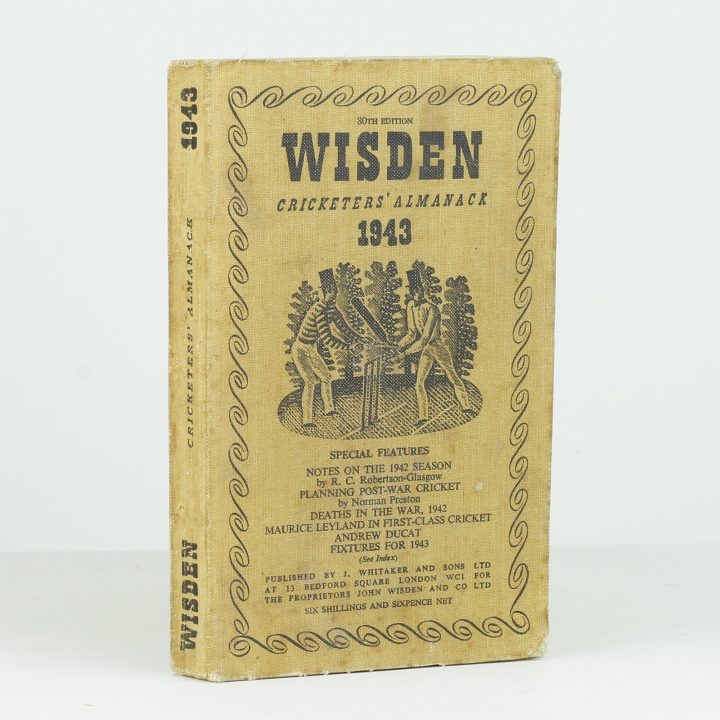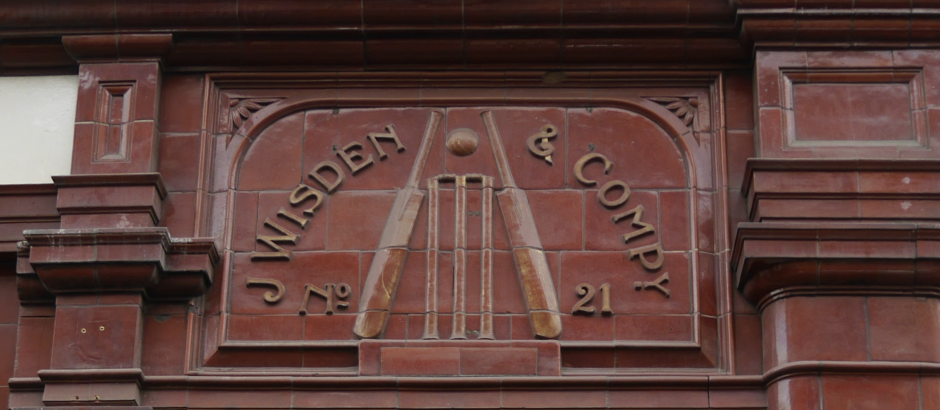It is not very often an ex-director of the Co-operative Wholesale Society (CWS) gets a full-page obituary in The Cricketer. That tribute was paid to Ken Medlock (1914-2020) after a remarkable innings of 105 years.
Born in the Peak District in 1914, Ken Medlock became chief engineer of the Cooperative Wholesale Society’s Engineering Department in Manchester in 1951, and went on to design the CIS tower in 1960 – then the tallest building in the country. That year he was elected to the board of the CWS.
At his first board meeting, a lowly agenda item proposed the liquidation of John Wisden & Co. As a keen amateur cricketer, Medlock was horrified. “You must be out of your mind,” he said. “You’re liquidating the best-known name in cricket!”
The chair, took the item off the agenda and appointed Medlock chair of the ailing company. His tenure was to last 10 years; but how did a company founded by one of England’s best cricketers of the 1850s and 60s come to be owned by the CWS?
John Wisden (1826–84), like many ex-professional cricketers, started a cricket and cigar shop with fellow England star Fed Lillywhite in 1855. By 1858 he was the sole proprietor and in 1864 he published the first edition of the celebrated Wisden Cricketers’ Almanack. The company rode the boom of cricket’s golden age, developing a business manufacturing and selling sporting goods for the Edwardian sports fan. From cricket bats and balls, to everything needed for tennis, rugby, hockey and football, the goods went around the Empire. Despite Wisden’s death in 1884, his name and business lived on with the company receiving a Royal Warrant in 1911.

Wisden became a limited company in 1914. In 1920 it acquired Duke & Son specialist cricket ball manufacturers and in 1924 Turner-Rolph Co, a bowls manufacturer. However, a reckless expansion into manufacturing tennis equipment put the business in serious trouble and in 1939 the company went into receivership.
It was not the best time to try to relaunch a sports good business, yet in 1943 the business was bought out of receivership by the CWS. At that time almost every co-operative society in the UK had a department store, and sporting goods was a popular department. Here was a chance to guarantee the supply for the coming post-war growth in sporting activity.
However, the war was far from kind to John Wisden. Its main factory in Kent was conscripted for war work and its factory at Mortlake was bombed. The CWS made a considerable investment in the business, including £72,000 to redevelop the Kent factory. By 1950, things were looking up and the organisation’s centenary was marked with a dinner at the Café Royal with guests including cricketers Jack Hobbs (1882-1963) and Herbert Sutcliffe (1894-1978). The fifties saw times begin to change, and fewer people went to department stores for cricket bats – and the competition of many small suppliers was cutting margins.
Ken Medlock was in for a culture shock; when he went to the factory at Penshurst in Kent, he found that the average age of the hand-stitchers of Dukes cricket balls was 73. “They were trying to be all things to all people and sell through Co-op department stores,” he said.
Medlock contacted other manufacturers and together they formed a cricket-ball co-operative. Soon manufacturing was streamlined. “It used to make me laugh,” he said. “You’d hear people saying this ball was better than the other … but they were all the same.”
He kept the losses manageable but losses continued throughout the 1960s. Selling sports good in department stores was no longer viable and by 1970 a new buyer was sought for John Wisden & Co. Medlock had at least reorganised the business so it could be sold – and sold it was, to Grays of Cambridge, who took 100,000 shares in the CWS in exchange. Today the Almanack is published annually by A&C Black, which is owned by Bloomsbury.

Ken Medlock had been a benign chair who ensured the continuity of the Almanack – and through a great friendship with Learie Constantine (1901-1971) had instigated the Wisden trophy for test series between England and the West Indies. Once John Wisden & Co was gone, Ken went on to be deputy chief executive of the CWS. In 1971, he left to become CEO of the Birkenhead and District Co-operative Society.
He gained something else, too. When they were clearing the factory for the sale, he discovered boxes of antique bats, some curved from the eighteenth century; and there were willow wands that had belonged to W.G. Grace, Ranjitsinhji, Victor Trumper and Gilbert Jessop, some of which were signed. Memorabilia had little value in those days – and so Ken was presented with what turned out to be the most valuable collection of cricket bats in the world.